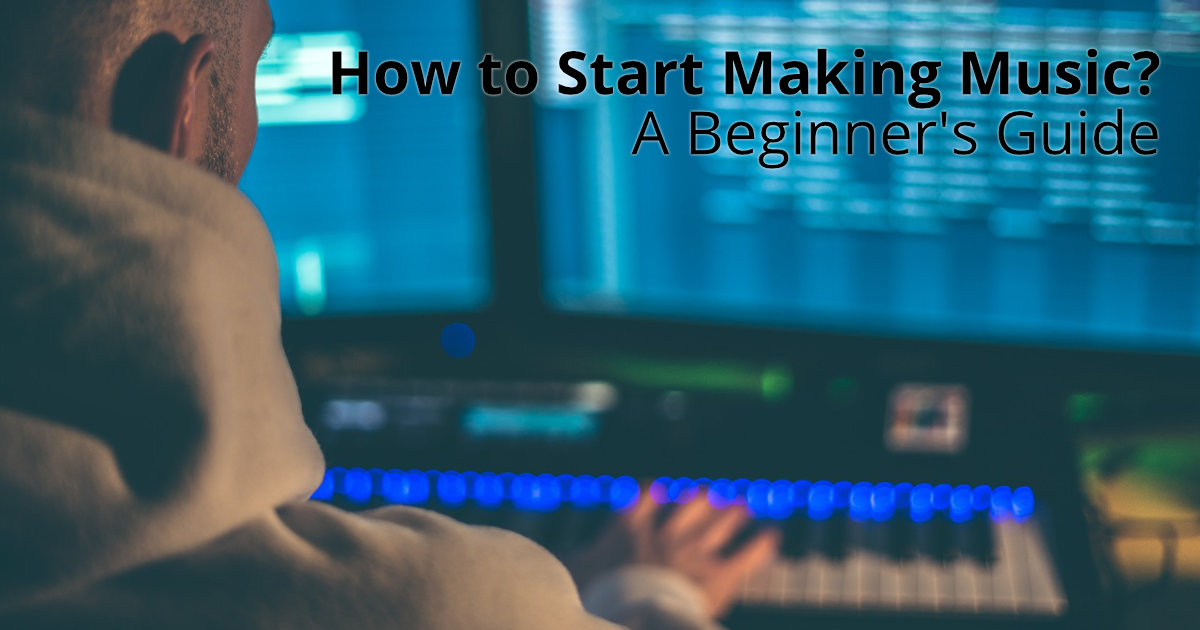Estimated reading time: 16 minutes
Ever found yourself humming tunes in the shower, only to wonder, ‘How to start making music?’ Fear not, fellow shower singers! From chord progressions to home studio setups, we’ve got you covered. Let’s turn those bathroom ballads into chart-toppers!
Table of contents
- Introduction to Making Music: The First Steps
- Understanding the Music Industry
- Choosing Your Type of Music: Exploring Music Genres
- Musical Instruments: Acoustic vs Electronic
- Getting Started with Music Theory
- Generating Musical Ideas Inspired by Your Favorite Songs
- Importance of Chord Progression in Music
- Introduction to Music Production Process
- Unveiling the World of Sound Design
- Essential Equipment for Beginners: Audio Interface, XLR Cable, and More
- Exploring Software and Virtual Instruments: FL Studio, Drum Machines, and More
- Dive into the World of Electronic Music Production
- Tips for Aspiring Music Producers
- Transforming Your Space into a Recording Studio
- How to get started making music – Video
- Conclusion: Kickstart Your Melody Today!
- FAQ
Introduction to Making Music: The First Steps
Diving into the world of melody creation, one may ask, how to start making music? The journey can be daunting at first, but with the right guidance, it can be a rewarding endeavour. Crafting a piece of music is like painting a picture with sounds and rhythms. It’s about expressing feelings, telling stories, and connecting with listeners. The first step is to explore your musical interests. Listen to different types of music, find out what resonates with you, and consider what kind of music you want to create.
Next, it’s essential to understand the basic elements of a song – melody, rhythm, harmony, and lyrics. Each of these elements plays a vital role in creating a unique musical piece. The melody, or the tune, is what catches the ear. The rhythm gives the music its tempo and groove. Harmony enriches the melody by adding depth and complexity, while lyrics tell the story or convey the message of the song.
Finally, get to grips with the technical aspects of music making. This includes learning about musical instruments, both acoustic and electronic, understanding music theory, and exploring music production techniques. Remember, the journey of making music is a continuous learning process, and patience is key.
Understanding the Music Industry
The music industry is a vast, interconnected web of artists, record labels, producers, and consumers. It’s a fast-paced, dynamic arena that constantly evolves with technology and trends. Understanding the music industry is crucial for any beginner looking to start making music.
Firstly, the music industry’s primary goal is to create, promote, and sell music. This involves a multitude of players – from the musicians who create the music, to the record labels that market and distribute it, and the retailers who sell it. Understanding how these entities work together can help you navigate the industry more effectively.
Secondly, technology plays a significant role in the music industry. From the production process to the way music is consumed, technology has revolutionised the industry. Modern music production software and electronic instruments have made music creation more accessible. Streaming platforms have revolutionised music consumption, making it easy for people to discover and listen to music from around the world.
Lastly, it’s important to understand the legal aspects of the music industry. This includes copyright laws, royalties, and contracts. These are critical elements that protect an artist’s work and ensure they are compensated appropriately. It’s a complex area, but a basic understanding can go a long way in safeguarding your interests.
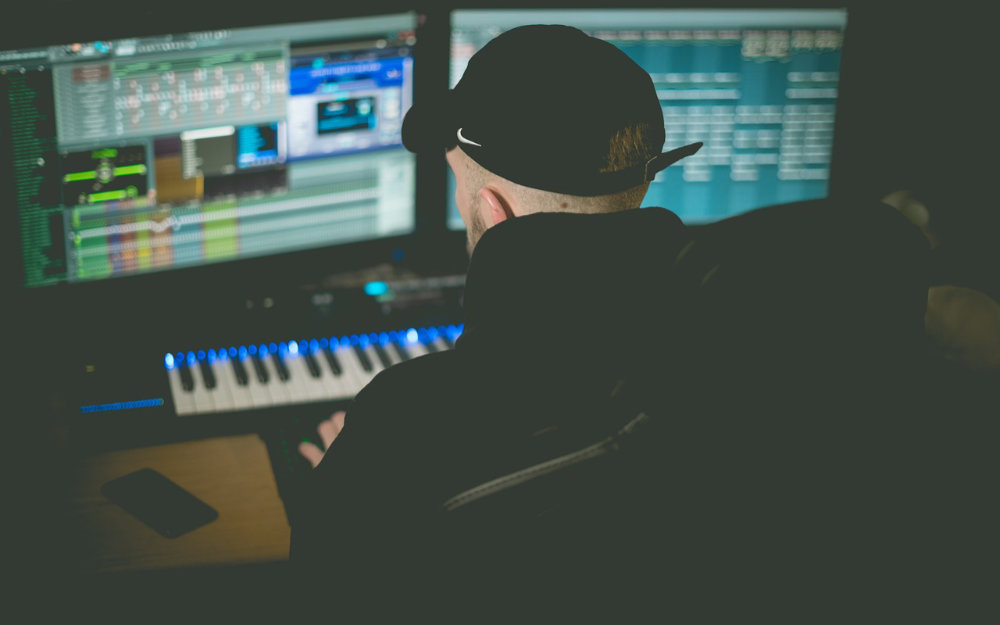
Choosing Your Type of Music: Exploring Music Genres
Music is a universal language, yet it speaks in many dialects. These dialects, or music genres, range from classical to rock, pop to jazz, hip-hop to electronic music, and many more. Choosing your type of music is a significant step in starting to make music.
Begin by exploring different music genres. Listen to various styles, learn about their characteristics, and understand their history. This exploration can provide inspiration and help you identify which genres resonate with you.
Next, consider the type of music that aligns with your musical skills and interests. For instance, if you have a knack for storytelling and enjoy playing the piano, you might lean towards songwriting in the pop genre. On the other hand, if you enjoy experimenting with sounds and technology, electronic music could be your calling.
Lastly, remember that music genres are not rigid categories. They often overlap and evolve, and many successful musicians draw influences from multiple genres. So, don’t be afraid to mix and match, to create your unique musical style.
| Music Genre | Characteristics |
|---|---|
| Classical | Rich orchestration, formal structure |
| Rock | Gritty guitars, energetic rhythms |
| Pop | Catchy melodies, upbeat tempo |
| Jazz | Improvisation, complex harmonies |
| Hip-hop | Rhythmic vocals, sampled beats |
| Electronic | Synthesized sounds, digital production techniques |
| Folk | Storytelling lyrics, acoustic instrumentation |
| Country | Twangy guitars, narrative storytelling |
| Blues | Soulful vocals, 12-bar chord progressions |
| Reggae | Offbeat rhythms, emphasis on bass |
Musical Instruments: Acoustic vs Electronic
Musical instruments are the tools of the trade for any musician. They are the vehicles that help you express your musical ideas. In the broadest sense, instruments can be divided into two categories – acoustic and electronic.
Acoustic instruments, such as pianos, guitars, and violins, produce sound naturally, without the need for electricity. They have a rich, warm tone that’s hard to replicate. Learning to play an acoustic instrument can be a rewarding journey, providing a strong foundation in music theory and technique.
On the other hand, electronic instruments, like synthesizers and drum machines, use technology to generate and manipulate sound. They offer a wide range of sonic possibilities, allowing you to create sounds that traditional instruments can’t. Electronic instruments can be a great choice for those interested in modern music production, particularly in genres like electronic music, hip-hop, and pop.
Choosing between acoustic and electronic instruments depends on your musical goals, interests, and resources. You might even choose to learn both, as many successful musicians do.
Getting Started with Music Theory
Music theory is the grammar of the music language. It helps you understand how music works and provides a framework for creating your own music. While it’s possible to make music without knowing music theory, having a basic understanding can greatly enhance your musical creativity.
Firstly, learn the basics of music theory, such as notes, scales, and chords. These are the building blocks of any piece of music. Understanding them can help you create melodies, harmonies, and chord progressions.
Next, delve into more advanced concepts like rhythm and meter, key signatures, and music notation. These concepts can help you structure your music and give it a sense of timing and flow.
Lastly, apply what you’ve learned in music theory to your music creation. Experiment with different chord progressions, try different rhythms, and see how they affect the feel of your music. Remember, music theory is not a set of rules, but a toolkit to help you express your musical ideas.
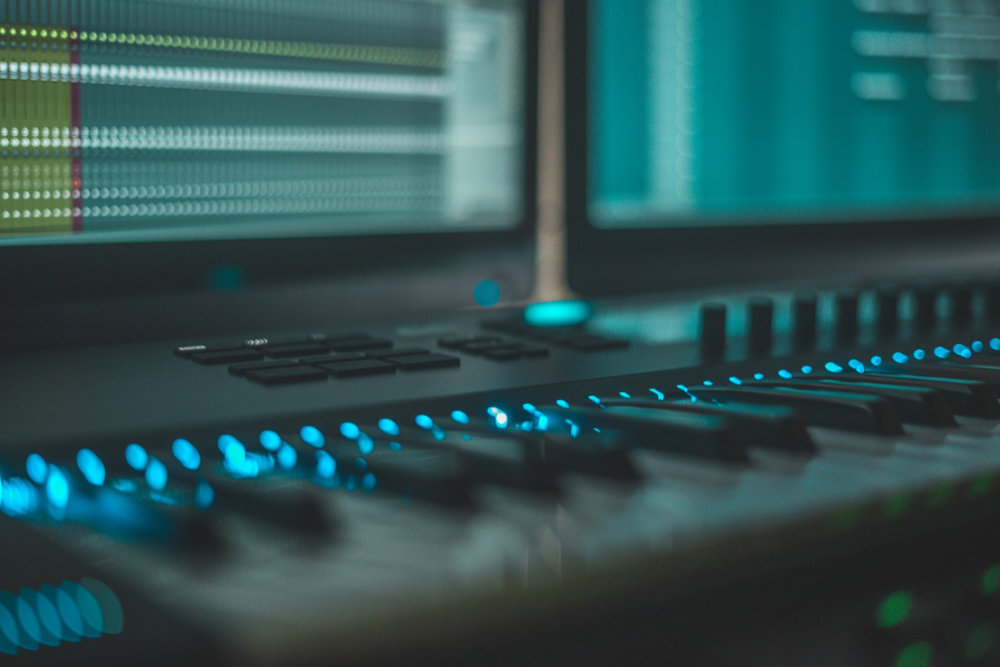
Generating Musical Ideas Inspired by Your Favorite Songs
Inspiration is a crucial ingredient in the music-making process. One of the best sources of inspiration is your favorite songs. They can provide valuable insights into song structure, melody creation, and more.
First, listen to your favorite songs closely. Pay attention to the melody, chord progression, rhythm, and lyrics. Analyze what makes them appealing to you, and try to incorporate these elements into your own music.
Next, experiment with different musical ideas inspired by these songs. This could involve creating a melody based on a similar rhythm, or using a similar chord progression. Remember, the goal is not to copy, but to learn and draw inspiration.
Finally, make it a habit to continually seek out new music. Exploring different artists, genres, and eras can broaden your musical horizons and provide fresh inspiration.
Importance of Chord Progression in Music
In the world of music creation, chord progression is a powerful tool. It’s the sequence of chords in a piece of music, and it forms the harmonic backbone of a song. Understanding and mastering chord progression is vital for any aspiring musician.
Firstly, chord progressions create the mood of a song. By choosing different sequences of chords, you can evoke various emotions in the listener. For example, a major chord progression can create a happy, uplifting mood, while a minor chord progression can convey a sad, melancholic feel.
Secondly, chord progressions provide structure to a song. They give the melody a framework to hang on and guide the listener through the song. A well-crafted chord progression can make a song memorable and engaging.
Lastly, understanding chord progressions can enhance your songwriting skills. They can inspire new musical ideas, help you create harmonies, and even form the basis of a new song. So, delve into the world of chord progressions, experiment with different sequences, and see how they can enhance your music.
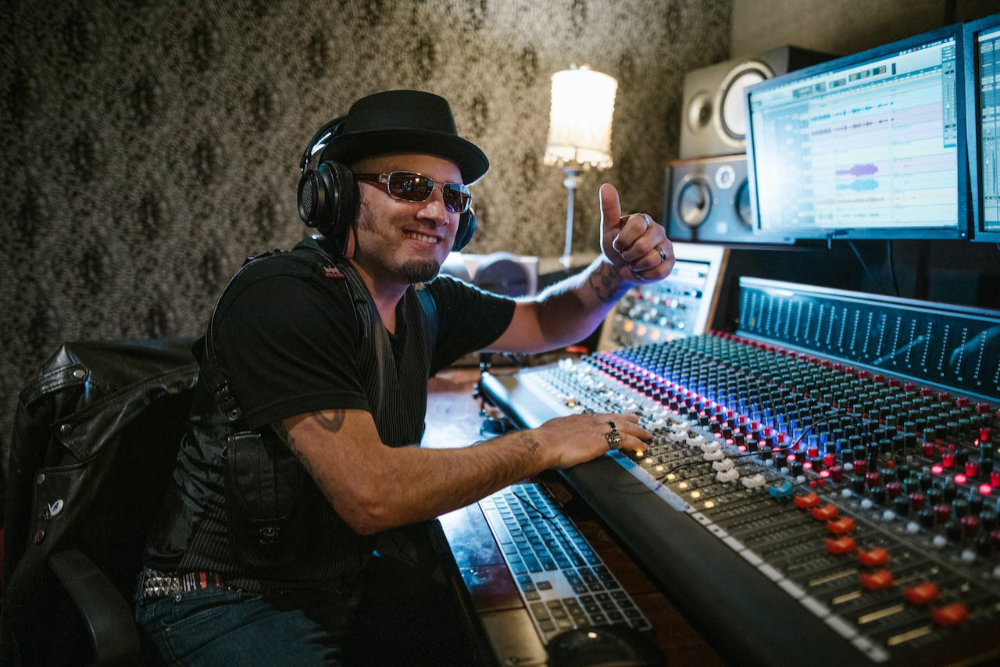
Introduction to Music Production Process
Music production is the process of creating a recorded song. It involves recording, editing, mixing, and mastering audio. While the process can be complex, a basic understanding can help beginners start making music.
Firstly, the recording stage is where the raw material for the song is captured. This can involve recording acoustic instruments, vocals, or electronic instruments. The goal is to capture the best possible performance with the best possible sound.
Next is the editing stage, where the recorded material is cleaned up and arranged. This could involve cutting out mistakes, aligning the timing of different tracks, or arranging the various parts of the song.
Then comes the mixing stage, where the different tracks are balanced and blended together. This involves adjusting the volume levels of each track, adding effects like reverb and delay, and panning tracks to create a stereo image.
Finally, the mastering stage is where the final touches are added. This involves enhancing the overall sound of the mix, ensuring consistency across different playback systems, and preparing the song for distribution.
| Production Stage | Description |
|---|---|
| Recording | Capture raw audio tracks of instruments and vocals |
| Editing | Clean up and arrange recorded material, adjusting timing and removing mistakes |
| Mixing | Blend and balance multiple tracks, adding effects and adjusting volume levels |
| Mastering | Finalize the mix, ensuring consistency and preparing for distribution, often done by mastering engineers |
Unveiling the World of Sound Design
Sound design is the art and science of creating and manipulating sounds. In music production, sound design is used to create unique sounds and textures that enhance a song. It’s particularly prevalent in electronic music, but it’s used in all types of music.
Sound design can involve creating new sounds from scratch using synthesizers, manipulating recorded sounds using effects, or layering different sounds to create complex textures. It’s a creative process that can add depth and interest to your music.
Getting started with sound design can be as simple as experimenting with the controls on a synthesizer or an effects plugin. Try changing the parameters and see how it affects the sound. Over time, you can develop your sound design skills and create your own unique sounds.
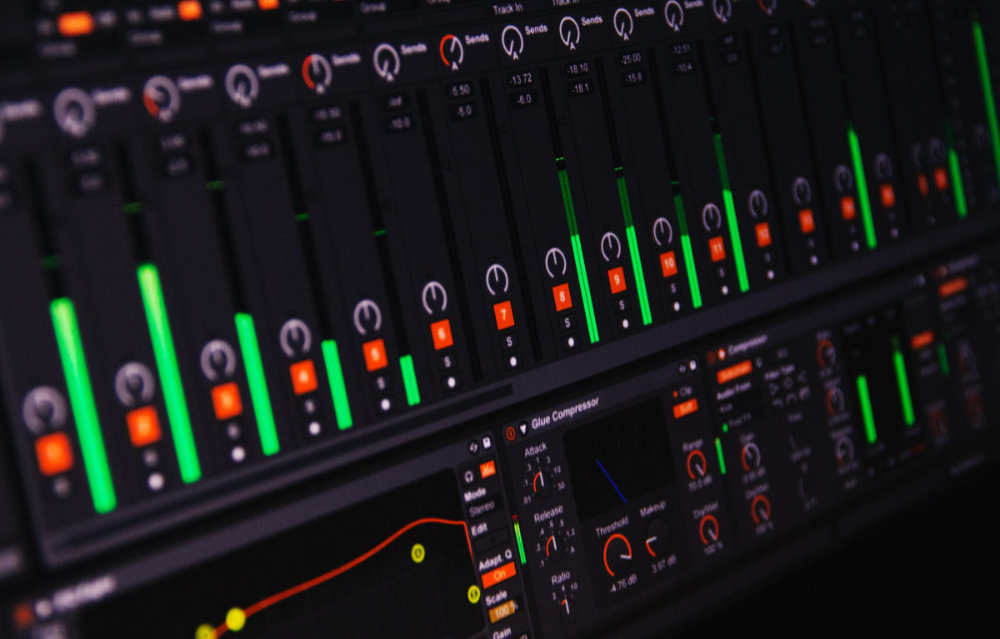
Essential Equipment for Beginners: Audio Interface, XLR Cable, and More
When it comes to making music, having the right equipment can make a big difference. For beginners, the essential equipment includes an audio interface, an XLR cable, a microphone, headphones, and a computer.
The audio interface is a device that connects your instruments and microphones to your computer. It converts the analog signals from your instruments into digital signals that your computer can process.
The XLR cable is used to connect your microphone to the audio interface. It’s designed to transmit high-quality audio signals with minimal noise and interference.
A good quality microphone is crucial for recording vocals and acoustic instruments. There are different types of microphones, each suited to different recording tasks, so choose one that fits your needs.
A pair of closed-back headphones is useful for monitoring your recordings and mixes. They provide good isolation, so you can hear the details in your music.
Lastly, a computer with a decent amount of processing power and storage space is essential for running music production software and storing your music projects.
| Equipment | Description |
|---|---|
| Audio Interface | Device to connect instruments and microphones to a computer, converting analog to digital signals |
| XLR Cable | Cable used to connect microphones and other audio equipment to the audio interface |
| Microphone | Captures sound for vocals and acoustic instruments, various types available |
| Headphones | Closed-back headphones for monitoring recordings and mixes |
| Computer | Essential for running music production software and storing projects |
Exploring Software and Virtual Instruments: FL Studio, Drum Machines, and More
In the digital age, software and virtual instruments are crucial tools for making music. They offer a wide range of sounds and capabilities, making them a versatile addition to any music production setup.
FL Studio is a popular music production software, known for its user-friendly interface and powerful features. It includes a range of virtual instruments and effects, a step sequencer for creating rhythms, and a piano roll for composing melodies and chord progressions.
Drum machines are virtual instruments that emulate the sound and function of traditional drum machines. They allow you to program drum patterns and beats, making them useful for creating rhythms in your music.
Other types of virtual instruments include synthesizers, samplers, and software instruments like pianos, guitars, and strings. These can be played using a MIDI keyboard or programmed using the software’s interface.
Using software and virtual instruments requires some time and practice to learn. But once you get the hang of it, they can greatly expand your musical palette and creativity.
| Software/Virtual Instrument | Description |
|---|---|
| FL Studio | Popular music production software with a user-friendly interface, offering virtual instruments, effects, and sequencing tools |
| Drum Machines | Virtual instruments that emulate traditional drum machines, allowing users to program drum patterns and beats |
| Synthesizers | Instruments that generate and manipulate sound using oscillators, filters, and modulation, offering a wide range of sonic possibilities |
| Samplers | Instruments that record and playback audio samples, allowing users to manipulate and trigger recorded sounds |
| Software Instruments | Emulations of acoustic instruments like pianos, guitars, and strings, playable via MIDI keyboard or software interface |
More FL Studio Related Posts
- How to Add Samples to FL Studio: Unleashing Your Creative Power
- How to use SoundFonts in FL Studio
- How to Connect a MIDI Keyboard to FL Studio
Dive into the World of Electronic Music Production
Electronic music is a genre that heavily relies on technology and sound design. It encompasses a wide range of sub-genres, from house and techno to dubstep and ambient. If you’re interested in making music with a modern, cutting-edge sound, diving into electronic music production can be a rewarding journey.
Firstly, familiarize yourself with the tools and techniques used in electronic music production. This includes music production software, electronic instruments like synthesizers and drum machines, and sound design techniques.
Next, listen to a lot of electronic music. Analyze the structure, the sounds, and the production techniques used in your favorite tracks. This can provide valuable insights and inspiration for your own music.
Lastly, experiment and create. Electronic music is a genre that encourages creativity and experimentation. So don’t be afraid to try new things, explore new sounds, and push the boundaries of what’s possible.
Ready to take your electronic music production to the next level? Dive into our collection of Sample Packs! Whether you’re crafting pulsating beats or atmospheric soundscapes, our packs are packed with professionally curated sounds to ignite your creativity. Elevate your productions with top-notch drums, synths, basslines, and more. Explore our Sample Packs and unleash your sonic potential!
Tips for Aspiring Music Producers
For those aspiring to become music producers, here are a few tips. Firstly, be patient and persistent. Learning to produce music takes time and practice, so don’t be discouraged if you don’t get it right away.
Secondly, always be learning. The world of music production is vast and constantly evolving, so there’s always something new to learn. Read books, watch music production tutorials, attend workshops, and learn from other producers.
Thirdly, invest in good quality equipment. While it’s possible to make music with basic equipment, investing in good quality tools can enhance your sound and make the production process more enjoyable.
Lastly, be creative and have fun. Making music is a creative process, so let your imagination run wild, experiment with different sounds and techniques, and most importantly, enjoy the process.
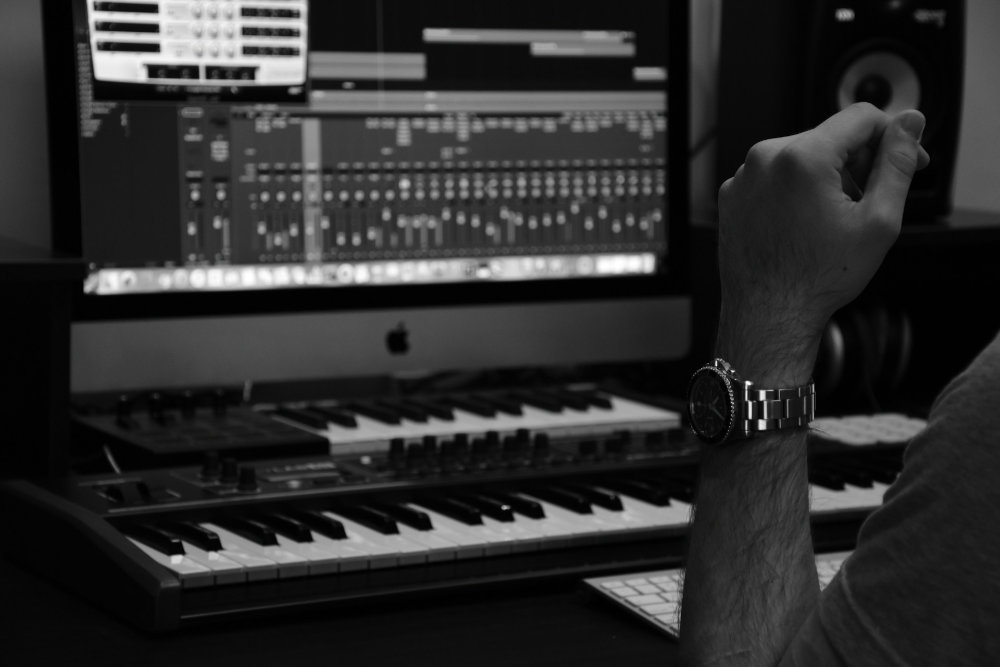
Transforming Your Space into a Recording Studio
Creating a home recording studio can greatly enhance your music production capabilities. It provides a dedicated space where you can focus on your music and achieve better sound quality.
The first step is to choose a quiet, well-insulated space. This could be a spare room, a basement, or even a corner of your bedroom. The key is to minimize background noise and echo.
Next, set up your equipment. This includes your computer, audio interface, speakers or headphones, microphones, and any musical instruments. Arrange them in a way that’s comfortable and efficient for your workflow.
Lastly, consider adding some basic acoustic treatment. This could involve placing foam panels on the walls to absorb sound and prevent echoes, and a bass trap in the corners to control low frequencies. While professional studios have extensive acoustic treatment, even some basic treatment can improve the sound quality in a home studio.
| Aspect | Description |
|---|---|
| Location | Choose a quiet, well-insulated space to minimize background noise and echo |
| Equipment Setup | Arrange audio interface, microphones, speakers/headphones, and instruments for efficient workflow |
| Acoustic Treatment | Consider basic acoustic treatment like foam panels on walls and bass traps in corners to improve sound quality |
| Lighting | Ensure adequate lighting for visibility and mood, adjustable for different tasks like recording and editing |
| Ergonomics | Arrange furniture and equipment ergonomically for comfort and accessibility during long recording or mixing sessions |
How to get started making music – Video
Conclusion: Kickstart Your Melody Today!
Starting to make music can be a challenging yet rewarding journey. It’s a pursuit of passion, creativity, and continuous learning. With the right guidance and a dedicated approach, anyone can learn how to start making music.
So why wait? Kickstart your melody today. Explore your musical interests, learn the tools and techniques, and start creating. Remember, the journey of making music is not a destination, but a journey. So enjoy the process, express your creativity, and make the world a little more melodious.
More Music Production Related Posts
- How to Make Music? The Ultimate Guide to Making Music: From Beginner to Producer
- How to Become a Music Producer? The Ultimate Blueprint to Becoming a Music Producer
- How to Remix a Song? A Simple Guide
- How to Write a Hit Song? The Art of Crafting a Hit Song: A Guide for Music Producers
- How to Make a Music Album: A Comprehensive Guide for Musicians and Producers
- How Much Does it Cost to Make a Music Video?
- Best DAW to Record Vocals – Discover the Ultimate DAW for Professional Vocal Recording
- What Does a Recording Engineer Do? Behind the Soundboard
- The Beginner’s Guide on How to EQ Vocals for Stellar Sound
- What Is Gain in Audio? Understanding Gain in Simple Terms
- What is Audio Normalization? Breaking Down the Basics
- What is a Riff in Music? Setting the Rhythm Free
- Mastering in Ableton: Elevate Your Music to Professional Quality
FAQ
Start by exploring your musical interests and understanding the basic elements of a song. Learn to play a musical instrument, understand music theory, and get familiar with music production techniques.
For beginners, the basic equipment includes an audio interface, an XLR cable, a microphone, headphones, and a computer.
Chord progression forms the harmonic backbone of a song. It creates the mood of a song, provides structure, and can inspire new musical ideas.
Choose a quiet, well-insulated space, set up your equipment, and consider adding some basic acoustic treatment.
Be patient, always be learning, invest in good quality equipment, and most importantly, enjoy the process.
